Arthur J Pais in Washington, DC
Nearly a decade ago, professor Adele Barker and her son Noah came to Sri Lanka from Tucson, Arizona, to the island. Settling into its verdant central highlands, she says, they spent the next year "immersing themselves in the customs, cultures, and landscapes of Sri Lanka -- its elephants, birds, and monkeys; its hot curries and sweet mangoes; the cacophony of its markets; the resonant evening chants from its temples."
They would also encounter there a world infused with the religious traditions of Buddhism, Hinduism, Islam, and missionary Christianity -- and with the troubled history of sectarian violence that had culminated in a 25-year civil war, one of the bloodiest such wars in our times.
Barker, who was awarded Ucross Fellowship for her work on her book, Not Quite Paradise: An American Sojourn in Sri Lanka (Beacon Press, Boston) has taught at the universities of Arizona and Washington. She is the author or editor of five books on Russian literature and cultural life. Most recently, she received a Fulbright Senior Scholar grant to teach and write in Sri Lanka.
When, having returned to Tucson, United States, after her stay in Sri Lanka, Barker awoke on December 26, 2004, to the images of the island's southern shore disappearing into the ocean. "I had to go back," she says. But her travels were not confined only to see the ravages of the Tsunami. She was also watching the devastation of the civil war.
Barker's book is also filled with the stories from the war front and temporary camps for Tsunami victims. She also sought out people she had known years before, only to discover that some of them were lost forever on "the day the sea came to the land."
Recently, Barker, whose blog on Huffington Post details her Sri Lanka concerns, returned to Sri Lanka to assess the post civil war situation. Click on NEXT to read her interview with rediff.com's Arthur J Pais...'It's a story of another slow-brewing political Tsunami that ended with LTTE's defeat'
Image: A Sri Lankan waves his country's flagPhotographs: Anuruddha Lokuhapuarachchi/Reuters
How did the book come about?
I went to Sri Lanka along with my son in 2001-2002 primarily to teach but also to write. If someone had asked me back then what I was going to write, I probably would have said that I had in mind a series of discreet, separate essays on the island. But things took a different turn for me as we began the process of digging in and making a home for ourselves.
The other thing that really tied this book together for me and really gave me momentum to write it was the war and the ethnic conflict that had been so much a part of that country for so long. After several months I understood that part of my book was going to have to be my attempt to unravel the strands of the conflict. Mind you, I knew virtually nothing about it. I felt like one of Mark Twain's innocents abroad.
My son and I left Sri Lanka in 2002 and came back to the United States, Tucson, Arizona in particular, where I continued working on the book. Then, as you know everything took a turn on December 26, 2004. The tsunami, my subsequent return and my time spent up north created a completely different narrative than the one I had set out to write. I felt sometimes in the second half of this book that I couldn't write fast enough to keep up with the narrative of what was happening over there.
In the first half of my book, I deliberately tried to slow down the narrative. Maybe it was my own rebellion against the way the US media reports things. This is not just a book about Tsunami-affected Sri Lanka but a story of another slow-brewing political Tsunami that ended with the defeat of the Tamil Tigers.
'There is still a lot of nervousness about the Tigers'
Image: A file photo shows Sri Lankan soldier keeps watch during a patrol in the jungle in the Puthukkudiyirippu areaPhotographs: Stringer/Reuters
Did you get the feeling when you revisited Sri Lanka recently that Tamil Tigers could come back in a few years?
I think the real question people asked -- Sri Lankans and foreigners as well as Tamils in Sri Lanka and in the Diaspora -- was whether the military victory in May of last year was really the end of the LTTE (the Liberation Tigers of Tamil Eelam). Did the death of Prabhakaran and much of his high command really spell the end of the entire organisation?
I think there was a lot of nervousness on the part of the Sri Lankan government and military that this was, in fact, not the end of the LTTE. This probably accounted for why so many people were herded into camps immediately after the military victory. People were interviewed, and those who were clearly members of the LTTE or suspected of being so were put into different zones in the camps or into different camps altogether.
But to get back to your question, I think there is still a lot of nervousness about the Tigers, as the LTTE is called. A pro-Tamil and sometime pro-Tiger website, tamilnet.com, and one that is actually very informative about Tamil concerns and events in the Tamil north, has been blocked. Sri Lankans can't access it.
The military presence in the country is enormous, much greater than when I was there in 2006 and that was during wartime. When I went back in December and January that military presence had increased. All of these things are to my mind evidence of a country that does not feel certain of its own military victory.
Essentially many of the Tamils' original grievances that led to the civil war in the first place have not been addressed. Problems such as greater representation in Parliament, more equitable allocation of and access to resources and education are still outstanding.
In the latter days of the presidential campaign that just took place, the current president, Rajapaksa, realising that his rival General Sarath Fonseka was closing in on him, began making noises about dealing with the rights of Tamils. But I would say that as long as these issues remain unaddressed there always exists the possibility for the Tigers to re-constitute themselves.
This really brings up the whole question of whether it was Prabhakaran himself, who was the glue that held the entire movement together and whether the organisation or the ideology can hold together without him.
'Most people have not understood the Tigers'
Image: A file photo shows LTTE chief Prabhakaran lighting up a traditional lamp as he opened a new Sencholai campus, a children's home established to care for children who lost both parents in the war, in Tamil Tiger held KilinochchiPhotographs: LTTE handout/Reuters
Is there something about the Tigers that the world does not know or has not understood properly?
I think there is probably a great deal about the Tigers that the world doesn't know. Part of this is due to the fact that the Tigers were a highly secretive organisation with a leader, who rarely addressed the outside world and even more rarely made public appearances or gave interviews.
We also know very little about them in the US because the civil war has received very little coverage in the western press. The UK did a better job of covering it than we did here in the US because Sri Lanka was once a British colony.
I think the thing most people don't understand about the Tigers was that it was not just a group of people who took up arms against the central government in order to acquire an independent homeland. Ideologically, it was a very tightly organised group adhering to very strict principles.
No deviation from their prescribed goals was allowed. Prabhakaran even said once to his cadres that if he ever backed away from his promise of a homeland (Eelam) for his people they had his permission to kill him.
The Tigers were the final radical solution to the problems that the government was unable or unwilling to address through conventional means and so finally by the 1970s the Tamil youth up north became radicalised under the leadership of Prabhakaran. A lot of Tamils shared Prabhakaran's aspirations; they wanted more rights, some even wanted an independent homeland. But increasingly, as the years went by, more and more parted ways with his methods.
'It is true that the LTTE were using child soldiers'
Image: An undated picture supplied by the Sri Lankan Ministry of Defence from a collection of photographs that government soldiers said were discovered recently in a hideout in northern Sri Lanka, shows a boy dressed in LTTE uniformPhotographs: Sri Lankan Ministry of Defence/Handout/Reuters
One of the biggest accusations against the Tigers is that they used children as shields and boy or girl soldiers. Did you get anyone talk about this? What did your own research show you?
Over a period of time, people did talk to me about these things. Yes, it is true that the LTTE were using child soldiers. There was a belief that every family had to contribute to the cause by giving one child. I know that young people began to marry at a very early age as a way of avoiding recruitment by the LTTE.
As to the child kidnappings, I have heard from many sources that they took place, but people often disagreed with each other as to who precisely was doing the kidnappings. One person told me that there was no way that Prabhakaran and his men were kidnapping children. They needed the support of the local population in Jaffna and in the area just south of it known as the Vanni.
Many people blamed the kidnappings on Colonel Karuna, once a prominent leader of the Tigers in the east, but who split with Prabhakaran and took some of the cadres with him. This I cannot confirm, though I have heard it. Karuna, by the way, is now a member of Rajapaksa's Parliament!
I can tell you that up to the end of the war if you were travelling north on the A9 road on a bus, there were four security check points, two government and two Tiger. At the Tiger checkpoints, there were sheds with benches in them where people were made to sit while the buses were checked. On the walls of the shed were pictures of Tiger soldiers, children, with their throats slashed. They were in Tiger uniform. They became martyrs to the cause.
It is important to remember that the Tigers operated mostly underground, particularly after the Jaffna Peninsula fell into government hands. There was not a particular uniform they wore when they walked down the streets. Some people used to tell me that they could be recognised by the motorcycles they rode. I don't know. But they were a kind of underground government and really adhered to law and order.
Someone once told me that his house had been robbed. The police came and filed a report. But then later a person who was obviously a Tiger arrived and gave him a slip of paper telling him to call this number if he ever had any more trouble. That was the thing about the organisation. Their brutality was feared, but by the same token they also kept the crime rate down on the streets in the north.
'Prabhakaran's House'
Image: The slain LTTE's chief's house as it stands todayPhotographs: Noah Barker
Tell us more about your visit to Prabhakaran's house. When was the last time he had lived in it? Would it become a pilgrimage place?
Prabhakaran's house is located just a block or two from the water's edge in a fishing village on the north coast of the Jaffna Peninsula near Point Pedro. He lived in that house when he was young. He belonged to the fishermen caste. His father was some sort of government inspector. Even though he was from a low caste he was educated. I'm not sure how long he lived in the house, but I know he spent his childhood there.
But then when he founded the LTTE in the early 1970s, he began moving about and ultimately went underground. When I first visited his house in 2005, there were tiles on the front wall in front of the house with the words in Tamils, Sinhala and English written on them "Prabhakaran's House" The house was empty, a shell of a place but it was evident that people had been visiting it and leaving graffiti on its walls. Some of it was in support of the movement, some was just garden variety graffiti.
While I was there a group of men came up to me and asked me why (then) US President George W Bush had branded the LTTE a terrorist organisation. I told them that we were not the only country in the world to have done so. I was no great supporter of President Bush, but by end 2005 the Tigers had left in their wake the 1983 mutilation of Sinhalese soldiers that led to the anti-Tamil riots in Colombo, literally dozens of suicide bomber attacks, the attack on the main airport in Colombo by Tiger warplanes, the bombing of the Temple of the Tooth in Kandy and that was just within their own country.
Then there was the assassination of former Indian Prime Minister, Rajiv Gandhi in 1991 by a female Tamil Tiger and the ongoing forcible extortion of funds from the Tamil communities abroad to help fund the Tiger cause. That was enough for many governments to brand the Tigers terrorists. But make no mistake; the atrocities in this civil war have been committed equally by both sides.
I went back to Prabhakaran's house this December. The tiles with his name painted on them had been smashed in the front yard -- weeds had grown, trash had been thrown about. The place was silent. No one approached us. I don't know who smashed those stones. That whole area is under government military control. The people who live there are fishermen. You can stand on the shore and still see the rubble from the tsunami that has not yet been cleared away. And then there was this 26-year war. Anyone could have smashed those tiles.
'The scars of wounds go much deeper'
Image: Downtown Jaffna todayPhotographs: Noah Barker
I was stirred by so many things. I was also frustrated by a lot of things. It took me four months to get authorisation from the Ministry of Defence for my son and myself to travel north. Sri Lankans are free now to travel on the main road connecting north and south. For foreigners it is much more difficult.
It was clear to us that the government was not eager to have foreigners or NGOs up there. Strangely, it was easier to go there in 2005 than it was this December. I was much cheered to see central Jaffna, particularly the market area. It was full of life in a way that it wasn't previously. There was more for sale, and I saw people buying things that suggested that they were rebuilding.
For years no one dared touch their homes or try to rebuild. It wasn't at all uncommon to meet someone who had moved maybe 10 or 11 times in the space of 15 years. When something like that happens a home simply ceases to have any kind of meaning as home, and people feel reluctant to rebuild. That seems to have changed now.
I think the most important thing that stuck me was the number of people working hard to put Jaffna back together again. It is a colossal undertaking. And there are organisations up there, both local and foreign, that are doing good works and really making a difference.
The Swiss Development Cooperation has stuck it out up there through times thick and thin. At the moment, they are actually sponsoring an entire village up on the Jaffna Peninsula helping to put it back together and move towards sustainability. And there are individuals up there who are doing tremendous work almost singlehandedly.
Psychologists are running counselling centres for survivors of the tsunami, the war and the camps. At the moment, though the need up there is much greater than what people can provide. Large numbers of people still need to be resettled from the last days of the civil war.
Visually you can't walk down a street without seeing shells of what once were houses, structures bombed and shelled beyond recognition. And those are just the outward scars of wounds that go much deeper. People are being released gradually from the camps but have no place to go. These things are going to take a long, long time.
'They' can all help in the healing process
Image: A Buddhist monk reads Sri Lanka President Mahinda Rajapaksa's election manifesto in the run-up to the presidential electionsPhotographs: Andrew Caballero-Reynolds/Reuters
Why do you think religions -- Hinduism, Christianity and Buddhism -- have not played a healing role in the brutal civil war?
This is a very complicated and troubling question, and I don't presume to have the answer to it. But there is one thing I noticed that might be of help. I noticed that whenever there was a political demonstration of some sort on the campus of Peradeniya where I taught, the Buddhist monks were always at the head of it.
When I asked friends about this they told me that I had a very western notion of Buddhism, and they were right. My first exposure to Buddhism came during the Vietnam War and during the peace movement in the US. We were all introduced to Buddhism over here as a philosophy of non-involvement; it was love; it was peace; it was meditation.
But what we missed was that in Sri Lanka and in fact in South Asia and South East Asia as a whole there has been a long tradition of political and social involvement on the part of the monks. And this is especially true in Sri Lanka. They have played an active role in the student insurrections from the early 1970s and then in the civil war.
There is a story in the Ceylonese epic The Mahavamsa that when the Buddha visited Ceylon and when the philosophy he espoused was brought to the island, with it came the belief that the island of Ceylon had to be made into a place where Buddhism could flourish and be protected. This belief still holds among many of the Sinhalese and among the monks themselves. Many of the monks are rapid Sinhalese nationalists.
But irrespective of that, many see their political and social activism as their duty as Buddhist monks on this particular island. There has been talk of setting up a peace and reconciliation commission in Sri Lanka. I think this is key if the country wants to get beyond the hurt and sense of victimization suffered by both sides. And here I think the island's four main religions: Buddhism, Hinduism and Christianity and Islam can play and must play an important role in the healing process.

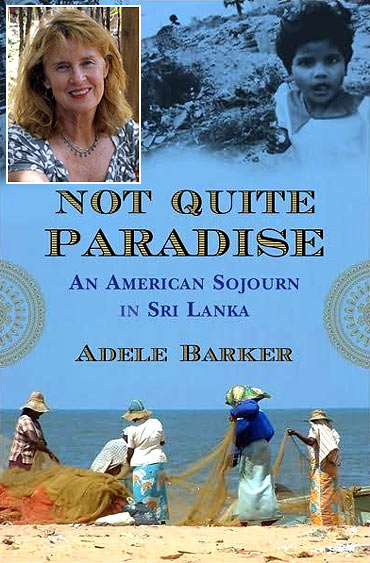
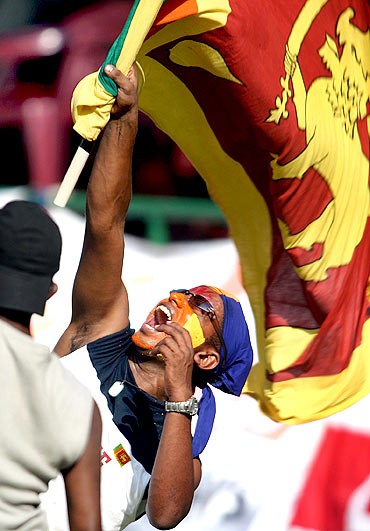
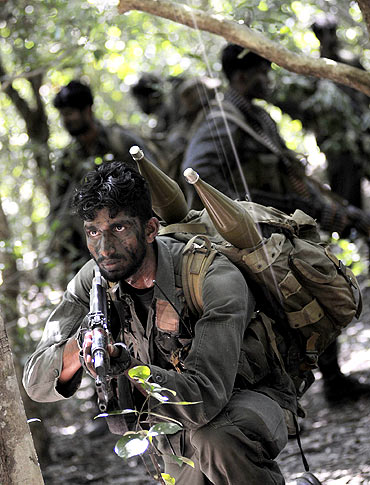

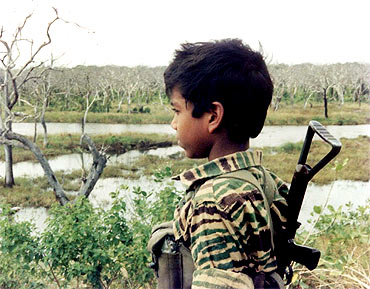
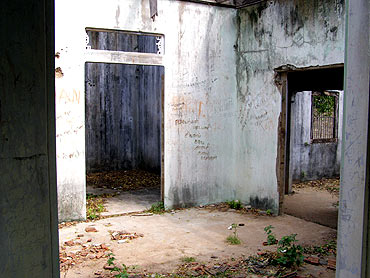
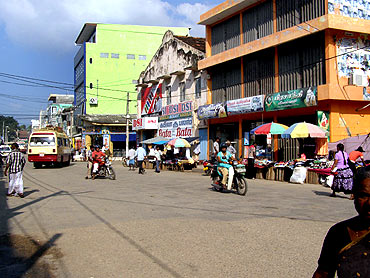
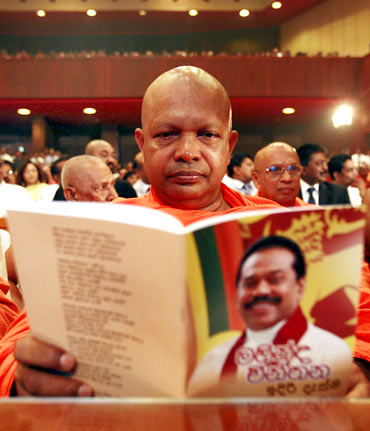
article